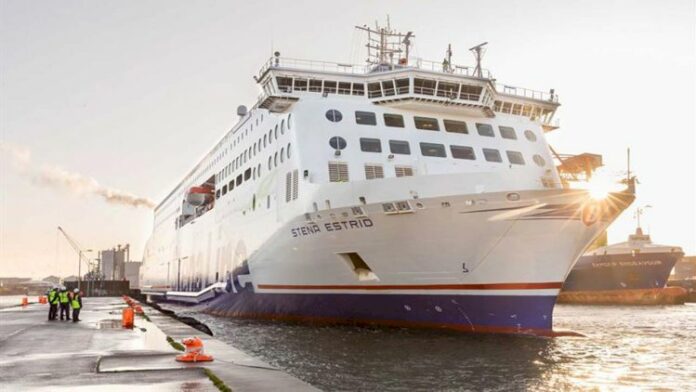After more than six years’ in planning and construction, Stena Line’s newest E-Flexer ferry Stena Estrid started service on the Irish Sea route from Dublin to Holyhead on January 13, 2020. Sister ship Stena Edda was delivered a few days later.
Described as one of the most modern ferries in the world, the Stena Estrid will make two daily return trips on the route Dublin-Holyhead. A crossing time of three hours and 15 minutes is barely enough time for passengers to check out the range of excellent facilities on board, including Estrid’s spectacular Sky Bar, two Happy World children’s play areas, a relaxing Hygge reclining lounge, Stena Plus lounge, two movie lounges, bigger Truckers lounge, Taste restaurant, and a bigger better shopping experience.
Niclas Mårtensson, CEO Stena Line, said:
“This has been a very significant month, not just for Stena Line but for the future of ferry travel on the Irish Sea, as we welcomed Stena Estrid to her new home on the Irish Sea. Her sister Stena Edda is now delivered and on her way back to the Irish Sea and is expected to commence operations from Liverpool to Belfast this spring."
A third vessel Stena Embla is expected to to be introduced on the same route in early 2021.
NIclas Mårtensson, CEO Stena Line, says:
“I’m proud that Stena Line continues to shape the industry for the next generation of freight and travel customers, for whom we are determined to deliver the best possible service. The E-Flexer class vessels we now introduce enables us to do this with more efficient loading and unloading operations, increased freight capacity and the best Scandinavian quality, style and design in our facilities -in an onboard environment that is spacious and light, with amazing panoramic views.”
At 215 metres in length, Stena Estrid is one of the most advanced vessels in operation and larger than today’s standard RoPax vessels, with space to carry 120 cars and 1,000 passengers, and a freight capacity of 3,100 lane meters, meaning a 50 per cent increase in freight tonnage on the route.



